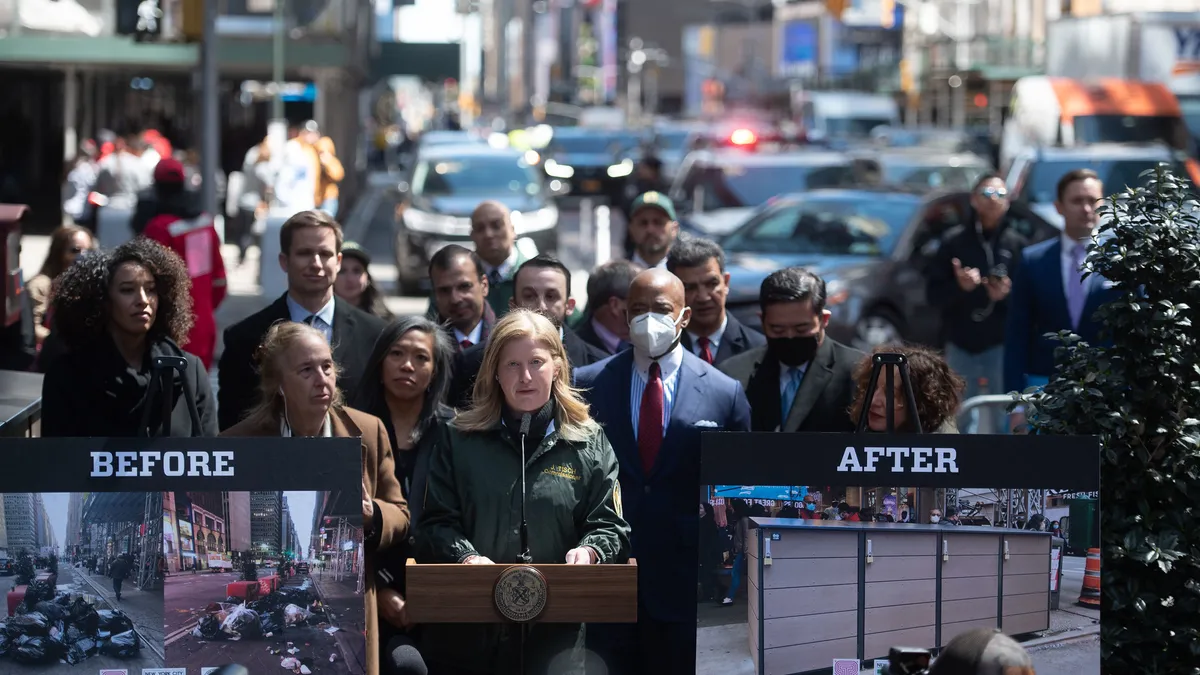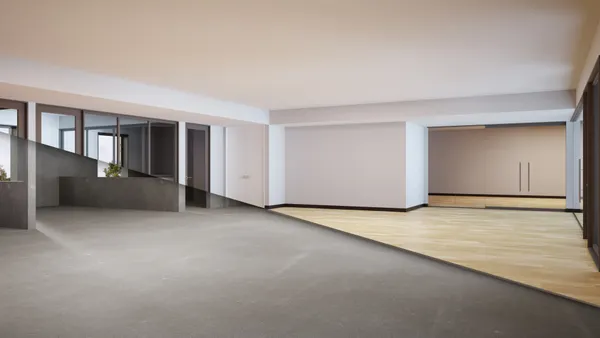Dive Brief:
- To move away from stacks of garbage bags blocking sidewalks and curbs, New York City plans to expand its test of containers for waste across all five boroughs with the support of $1.3 million in new funding in fiscal year 2023, it announced this spring.
- This expansion of the Department of Sanitation and Department of Transportation's Clean Curbs pilot program allows business improvement districts and commercial property owners to pursue installing the sealed containers on city streets or property. While the city is providing grants to help with the upfront cost of the containers, the BID or property owner must arrange for waste collection.
- The Times Square Alliance BID began installing containers in April and expects to have around seven bins in place by about early July, at a cost of approximately $7,500 each, said President Tom Harris. He described the program's first months as a success. "Our staff seems to like it because there's less breakage of the bags," he said. "On the street, there's less people putting additional garbage on top of a pile of garbage. Garbage begets garbage ... This is much more compact."
Dive Insight:
Garbage bags piled at the curb are unsightly, smelly, result in litter and attract rats, but they've been a feature of trash disposal in New York City for decades. After first announcing the Clean Curbs pilot program in 2020, the city is highlighting new funding and encouraging participation, with some business improvement districts among the early adopters.
Harris said that aside from a brief learning curve for staff picking up from the new bins, the move to containerized waste has been smooth. He noted, however, that not all BIDs are in a position to service their own bins. "We're privileged to have our own truck," Harris said.
In applying to participate, BIDs must select containers that meet certain design and siting requirements. Times Square installed containers from CITIBIN, a Brooklyn-based manufacturer.
The SoHo Broadway Initiative, which submitted an application to participate in the most recent round but was not selected, is working with designers on a custom container model in the hope of being approved in the future.
"We wanted to put something out there that not only held garbage [and] was rat-proof, but also was aesthetically pleasing," said the BID's executive director, Mark Dicus. "And there's just not a product out there that's off the shelf that could be purchased that met those requirements."
Dicus sees benefits of allowing BIDs to use the containers that are best for them. "You want to give as much flexibility for those in the marketplace — BIDs and other neighborhood-based organizations — to test out things and prove that this works. We see it working in other parts of the country and other parts of the world."
At the same time, Clare Miflin, executive director of the Center for Zero Waste Design, a group formed in 2019 to advance efforts around waste reduction and circularity in architecture, noted that the lack of a uniform design could be a potential barrier to entry for some interested entities. "It would just be much easier to have a city standard design," Miflin said, because even with grant money to support the purchase of containers, those applying still have to go through the process of designing or selecting a container. Some neighborhoods don't have the knowledge or the funding to do so, she said. She would like to see more resources devoted to the program and for it to expand to cover more residential properties and organics collection, she said.













